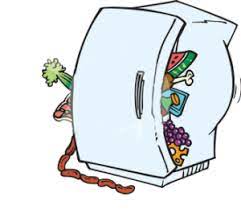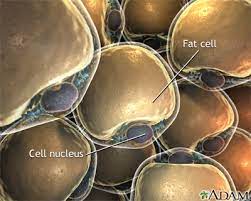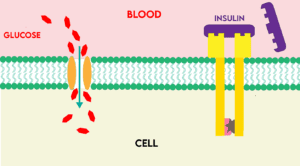There are two types of diabetes: Diabetes Type 1, and Diabetes Type 2. Diabetes Type 1 is a chronic disease of people whose pancreases cannot produce insulin. Diabetes Type 2 is a dietary disease, which can be reversed. This website focuses on the ways we can reverse Type 2 Diabetes.
Basically, Type 2 Diabetes, is a dietary disease suffered by people who have too much sugar in their bodies. Our body stores energy as sugar and fat in different areas. When the body cannot store any more sugar, an imbalance happens which causes problems. The doctor then tells you that have diabetes.

Imagine continually buying food and storing it in the fridge. When the fridge is full, we put the excess food into the freezer. When the freezer cannot hold any more food, it is left outside and if we do not eat it, the food goes bad. In the case of the body bad things start to happen.
Where does the body store energy sources?
Sugar or glucose is mainly stored in the liver and in the muscles. Fat is stored in special fat cells called lypocytes

How exactly does the body store energy?
The liver converts glucose to a substance called glycogen and stores it in special cells called hepatocytes. Our muscles also transform glucose and store it as glycogen. In addition, glucose is changed into fatty acids, which are the building blocks of fat. All these transformations are mediated by a hormone called insulin.
 Where is insulin made?
Where is insulin made?
Insulin is a relatively small hormone that is produced in the pancreas. The pancreas is tucked away between the stomach and the spine. When the pancreas detects sugar in the blood, it releases insulin into the bloodstream.
 How does insulin function?
How does insulin function?
Insulin is like a key that fits certain locks. Those locks are called receptors. The insulin molecule fits into the receptor in the membranes, or the walls of the cells. When the insulin attaches to the receptor, the cells take in glucose from the bloodstream.
In the liver and muscles, the glucose is converted into glycogen, and in the fat cells the glucose is transformed into fatty acids.
What happens when we eat too much sugar?
If a person continually eats carbohydrates, which are ultimately digested into glucose, then the blood glucose level will cause the pancreas to continually produce and release insulin into the bloodstream. Over time, the insulin receptors in the cell walls , particularly of muscles and the liver, become increasingly less effective in generating the signals necessary for operations to occur inside the cell
One example is that although the insulin fits into the insulin receptors in the cell walls, they do not initiate signals to move glucose transporters that are inside the cell to fix into the cell walls.
These vesicle-like structures usually open up the entry of glucose into the cells. In their absence glucose no longer enters the cells from the blood. We say that there is now insulin resistance. The cells of the tissues do not respond in a normal way to insulin.
At this stage, over eating carbohydrates increases insulin resistance even further and glucose stays in the blood stream at elevated levels. If a person has a blood glucose concentration of more than 100mg/100ml on waking every day, then that person is diabetic. The individual may experience distinct symptoms.


